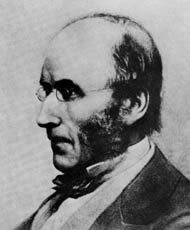Gothic Revival architect. Born London. Wikipedia give a list of his works and it is long, mainly churches, including in London: All Saints - Margaret Street; St Augustine's - Queen's Gate; St. Mary Brookfield - Dartmouth Park Road; St. Alban's church - Holborn. He particularly liked using different coloured materials, such as bricks, to adorn his buildings - polychromy. 1886 moved to 42 Bedford Square where he died.
This section lists the memorials where the subject on this page is commemorated:
William Butterfield
Commemorated ati
William Butterfield
Greater London Council William Butterfield, 1814 - 1900, architect, lived here.
Other Subjects
Frank Matcham
Theatre architect. Born Newton Abbot, Devon. Never qualified as an architect but designed at least 80 theatres and did some work on about the same number again. About 24 of his theatres survive rea...
Carmody and Groarke
Architectural practice of Kevin Carmody (from Melbourne) and Andrew Groarke (from Manchester), formed in 2005.
Philip Webb
Architect. Born Oxford. 1856 moved to London and joined the circles around the Pre-Raphaelite Brotherhood. William Morris used him to design the Red House. Also designed Prinsep's house at 1 Ho...
T. Thornton Green
Architect active at least in this period, 1883-91. From The Builder, 1887: "Professional Partnership. — Mr. T. Thornton Green, surveyor, Poultry, announces that he has taken into partnership Mr. P...







Comments are provided by Facebook, please ensure you are signed in here to see them